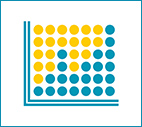 According to $2.00 a Day: Living on Almost Nothing in America, a new book by Kathryn J. Edin and H. Luke Shaefer, inequality in the U.S. is now so extreme that there’s even inequality among the poor:
According to $2.00 a Day: Living on Almost Nothing in America, a new book by Kathryn J. Edin and H. Luke Shaefer, inequality in the U.S. is now so extreme that there’s even inequality among the poor:
In $2.00 a Day: Living on Almost Nothing in America, Kathryn Edin and Luke Shaefer argue that what they call “extreme” poverty roughly doubled between 1996 and 2012. If they are right—and I think they are—the reader might wonder how I can still claim that poor families’ living standards have risen. The answer is that inequality has risen even among the poor. Half of today’s officially poor families are doing better than those we counted as poor in the 1960s, but as I learned from reading $2.00 a Day (and have spent many hours verifying), the poorest of the poor are also worse off today than they were in 1969. $2.00 a Day is a vivid account of how such families live. It also makes a strong case for blaming their misery on deliberate political choices at both the federal and state levels….
The most obvious explanation for the increase in extreme poverty between 1996 and 2011 is that jobs were harder to find in 2011, but that is only half the story. Until 1996 single mothers with no income were eligible for Aid to Families with Dependent Children (AFDC). Edin and Shaefer argue that extreme poverty rose after 1996 because Congress replaced AFDC with an even less generous welfare program called Temporary Assistance for Needy Families (TANF). Because TANF benefits are much harder to get than AFDC benefits were, parents who cannot find a job are more likely to find themselves penniless.
$2.00/day in the U.S.? It boggles the mind. Do you agree with the listed reasons, and what do you think some solutions might be?
